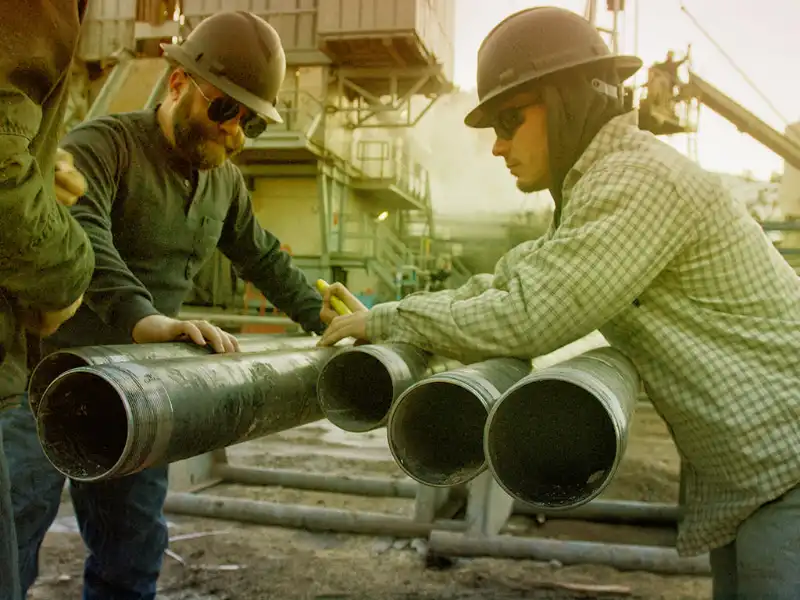The Bureau of Labor Statistics reported the following heat-related incidents for the year 2015:
- Exposure to environmental heat led to 37 work-related deaths and 2,830 non-fatal occupational injuries and illnesses involving days away from work.
- Nearly 90 percent of heat-related deaths occurred between June and September.
Heat Illness Symptoms and Treatment
As with other safety threats in the workplace, heat-related illnesses can be prevented, but it is important to be aware of the symptoms and first-aid measures to take if necessary. Here is a brief outline of the symptoms and recommended first aid treatment for heat-related illnesses.
Heat rash is the most common heat-related problem in the workplace. It appears as clusters of red bumps on the skin, most often on the neck, upper chest, and folds of skin. If affected by heat rash, keep the affected area dry and try to work in a cooler, less-humid environment.
Heat cramps are muscle spasms and pain, usually in the abdomen, arms, or legs. A worker who is experiencing heat cramps should rest in a shady, cool area and drink plenty of water. The worker should rest for a few hours before returning to strenuous work activity. Medical attention is advised if the cramps do not go away within one hour or so.
Heat exhaustion symptoms include cool, moist skin and heavy sweating, as well as headache, nausea or vomiting, dizziness, lightheadedness, weakness, thirst, irritability, and fast heartbeat. This is serious enough that if a worker experiences heat exhaustion they should not return to work for the remainder of the day. The affected worker should sit or lie down in a cool, shady area and drink plenty of water. The worker can also be cooled by using cold compresses or ice packs. If the signs or symptoms worsen or do not improve within 60 minutes, the worker should be taken to a clinic or emergency room for evaluation and treatment.
Heat stroke is a medical emergency – call 911 immediately. Symptoms may include confusion, fainting, seizures, and a very high body temperature. The individual may be sweating excessively, or their skin may be red, hot, and dry. While waiting for medical help, move the worker to a cool area and give them fluids – preferably water. Loosen their clothing and remove outer clothing. If available, apply ice packs, cool compresses, or ice. Do not leave them alone while waiting for help.
Heat Illness Prevention
Employers have a responsibility under OSHA law to provide a workplace that is free of known safety hazards, including protecting workers from extreme heat. If your employees are exposed to high temperatures, you should establish a complete heat illness prevention program that includes the following:
- Provide water, rest, and shade for employees.
- Allow new or returning workers to gradually increase workloads and take more frequent breaks as they build a tolerance for working in the heat.
- Plan for emergencies and train workers on prevention.
- Monitor workers for signs of illness. Symptoms should be dealt with immediately, as prolonging treatment may worsen the condition.
- Remind employees to drink plenty of water throughout the day.
Reducing Indoor Exposure to Heat
Though we often associate heat illnesses with being outdoors, heat-related health problems can also occur in indoor environments. The risks can be reduced and even prevented by keeping the work environment cool and employing safe work practices. There are a variety of safe work practices and engineering controls that can reduce workers’ exposure to heat while working indoors:
- Install and maintain adequate air conditioning and cooling fans.
- Increase general ventilation to help circulate cooler air.
- Ensure that points of high heat production or moisture have local exhaust ventilation.
- Install reflective shields to redirect radiant heat and make sure hot surfaces (such as furnace walls) are insulated.
- Watch for and eliminate all steam leaks.
- Establish an emergency plan that details how to recognize the signs of heat-related illness and appropriate treatment methods. Make sure employees are familiar with the plan.
- Acclimatize workers to warmer work conditions by gradually increasing workloads and allowing more frequent breaks during the first week of work.
- Provide plenty of drinking water close to the work area, and encourage employees to drink water frequently throughout the day.
- If possible, schedule heavier work for cooler times of day, and rotate job functions to minimize overexertion and exposure to heat.
- When appropriate to the job situation, provide personal protective equipment (e.g., respirators, insulated gloves, and impermeable clothing).




